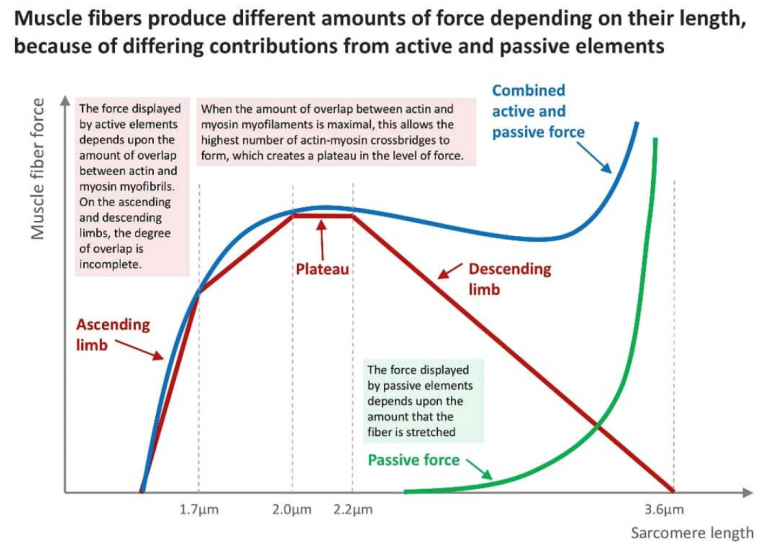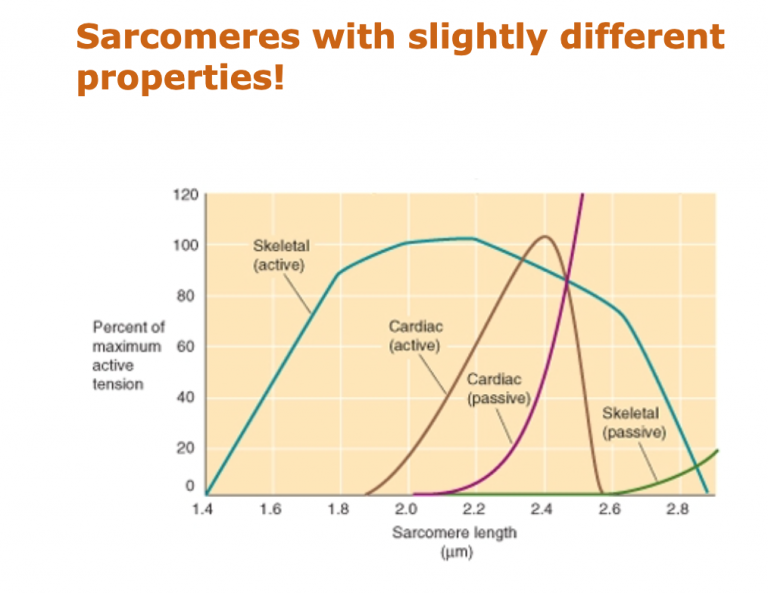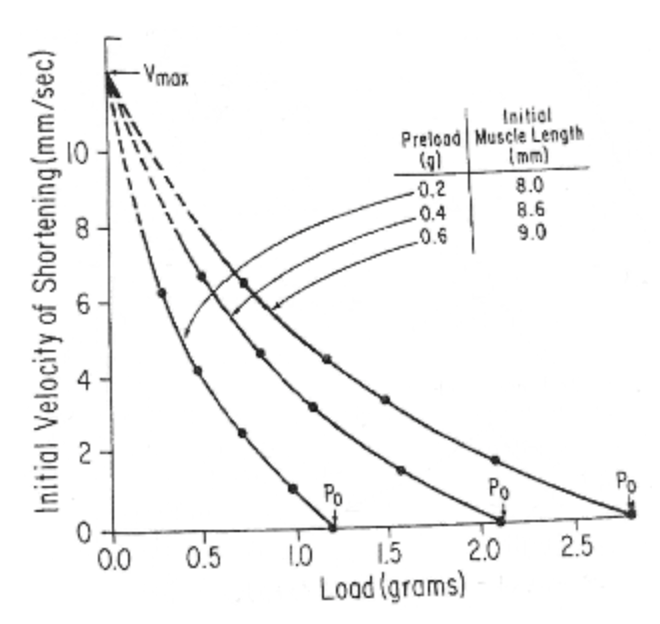L1iv / 19B03: Describe the relationship between muscle length and tension. Outline the significance of this relation ship in cardiac muscle
19B03: Exam Report
Describe the relationship between muscle length and tension (50% of marks). Outline the physiologic significance of this relationship in cardiac muscle (50% of marks).
41% of candidates passed this question.
Some detail was expected on a general description that tension is variable with the length of muscle. It was expected answers would describe that there is a resting length at which tension developed on stimulation is maximal. Many candidates omitted that differences exist between muscle types with smooth muscle behaving differently. Additional credit was given for the distinction about active tension vs resting tension. It was expected a description of the potential mechanism would be included with discussion of sliding filament theory, overlapping fibres and optimal sarcomere length. Some candidates utilised a diagram effectively to convey understanding and more detail was rewarded with additional marks.
The second half of the question involved describing how this relationship is particularly important in cardiac muscle and underpins the Frank Starling relationship and all the cardiac physiology that follows. Initial length of fibres is determined by the diastolic filling of the heart, so pressure developed is proportionate to the total tension developed. The developed tension increases as diastolic volume increases to a maximum (the concept of Heterometric regulation). Better answers appreciated that the physiology may be different for a while heart rather than isolated muscle fibres.
L1iv / 19B03: Describe the relationship between muscle length and tension (50 marks). Outline the physiological significance of this relationship in cardiac muscle (50 marks)
Definitions
Muscle Tension = the force exerted on an object by a contracting muscle
Length-Tension Relationship
The observation that the force generated by a muscle fibre is different and depends on the static length of the muscle when it was activated.
The length tension relationship is explained by the Sliding Filament Theory published in 1954 (AF Huxley & R Niedergerke and HE Huxley & J Hanson), which describes the molecular basis of muscle contraction. Their papers showed that the position of actin & myosin at different stages of contraction produced different contractile force.
- At short lengths, low tension (force) is generated (ascending limb) – understretched muscle forms fewer crossbridges of actin & myosin
- At moderate lengths, greater tension (force) is generated (progressing up to plateau) – due to increasing actin & myosin overlapping
- The Optimal Length (Plateau) is where the fibre generates the greatest tension – at this length, the number of cross-bridges formed is greatest
Passive Length-Tension Relationship
Resting Tension = tension generated when muscle fibres elongated. The tension is produced by the supporting tissue without any chemical reactions and is therefore passive. The force generated is not useful for doing work
Resting tension is due to the elastic forces of structures supporting the myocytes; titin inside the myocyte and collagen surrounding the myocyte. Resting tension increases once sarcomere working range is exceeded
Active Length-Tension Relationship
Active Tension = the tension generated through metabolism of energy resulting in the sliding of myofilaments during a crossbridge cycle. This force is useful for doing work.
Once the sarcomere exceeds its optimal length, the binding sites have all been taken and the two Z discs of the sarcomere abut the ends of the myosin filaments and strength of contraction decreases rapidly (from 1.7mm). You can see this reduction in active tension by the narrower arrows between the Total Tension and Active Tension lines
Active tension cannot be directly measured, it is the difference between Total Tension – Passive Tension. The reduction in tension as the muscle length exceeds optimal length can be seen as a decreased length of the arrow in the figure (Total-Passive)
Total Length-Tension Relationship
The summation of active and passive tension forces
Cardiac Muscle Length-Tension Relationship
Cardiac myocyte function is to eject blood from the heart
According to F-S mechanism, the ventricle is able to increase its FoC & SV in response to an increased venous return (preload)
This is an intrinsic property of the heart which allows it to rapidly adapt to changing volumes of venous return.
The greater the preL = the greater the degree of sarcomere length = the greater the tension generated = the greater the velocity of muscular contraction for a given afterL
This increase FoC is made possible bc actin & myosin filaments are brough to a near optimal degree of overlap for force generation
This occurs up to a maximum limit (sarcomere length 2.2mm)
- Author: Krisoula Zahariou


